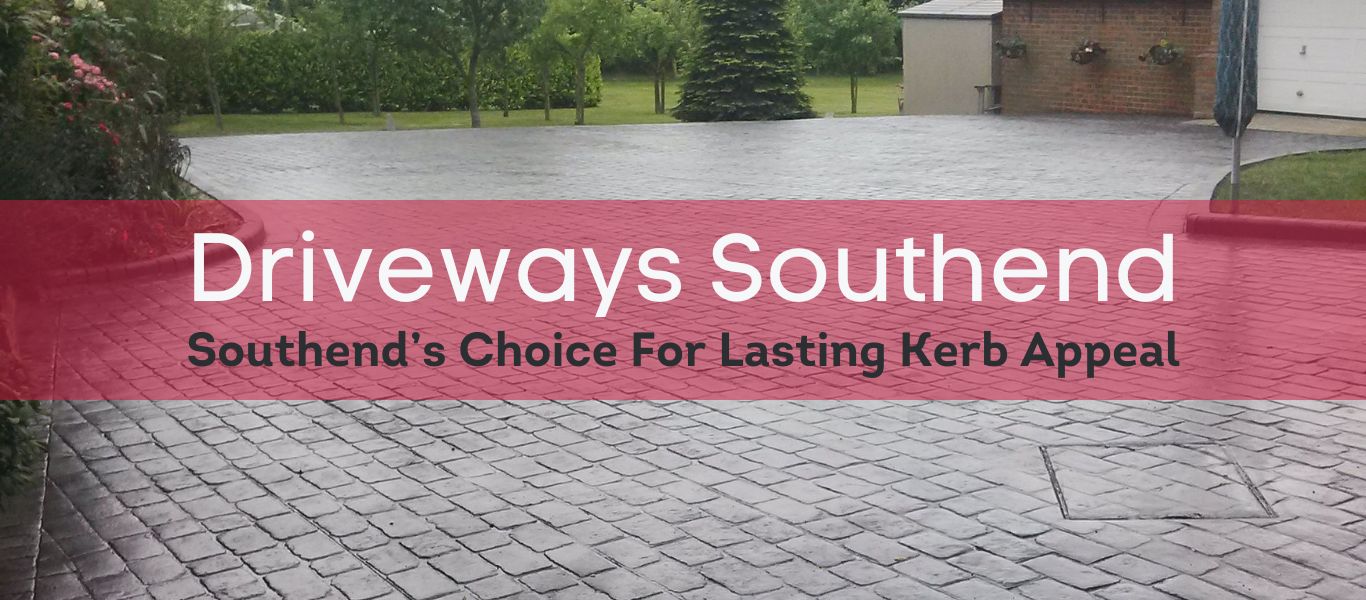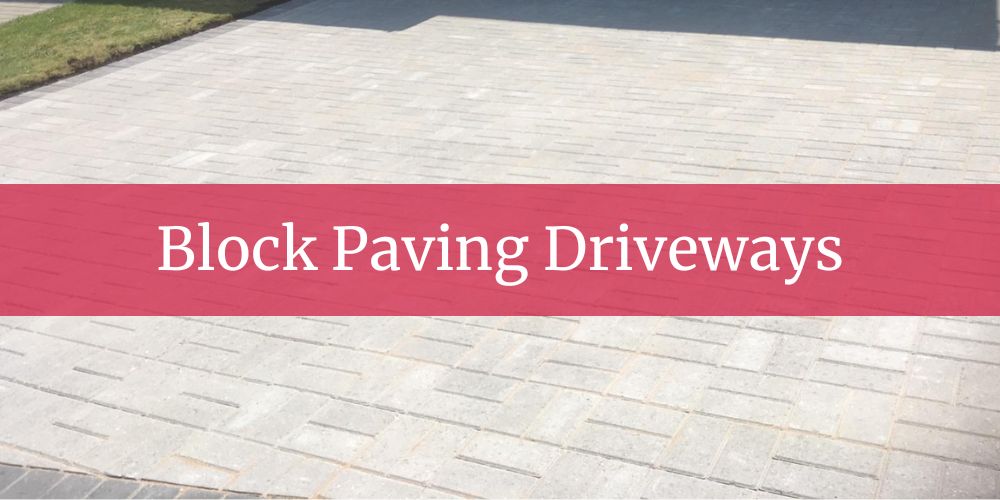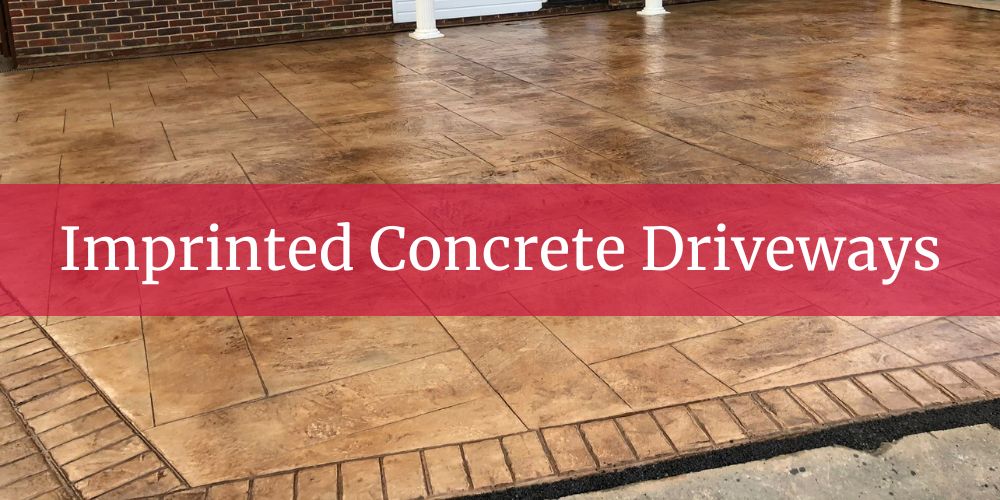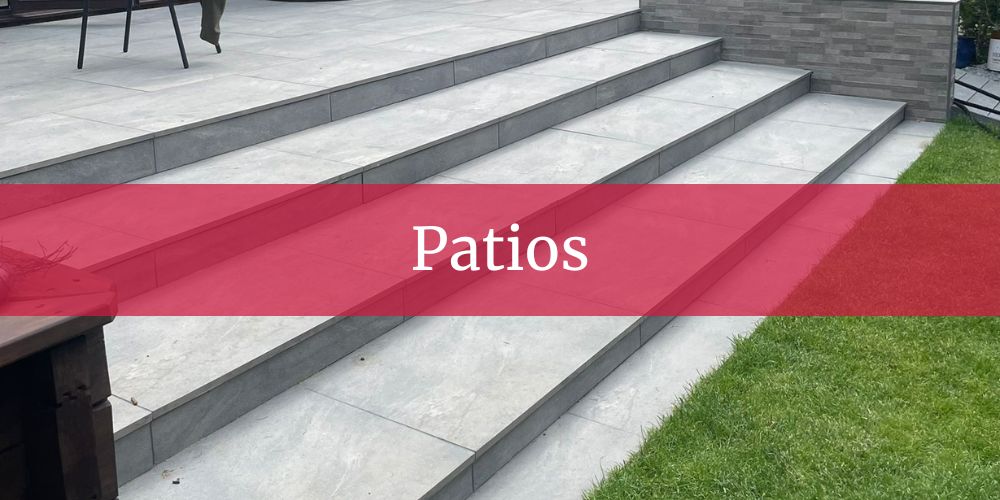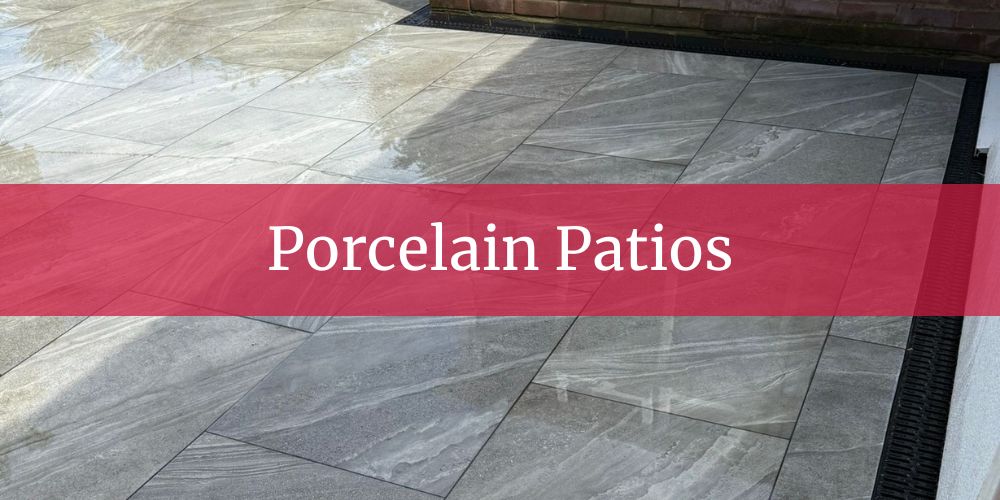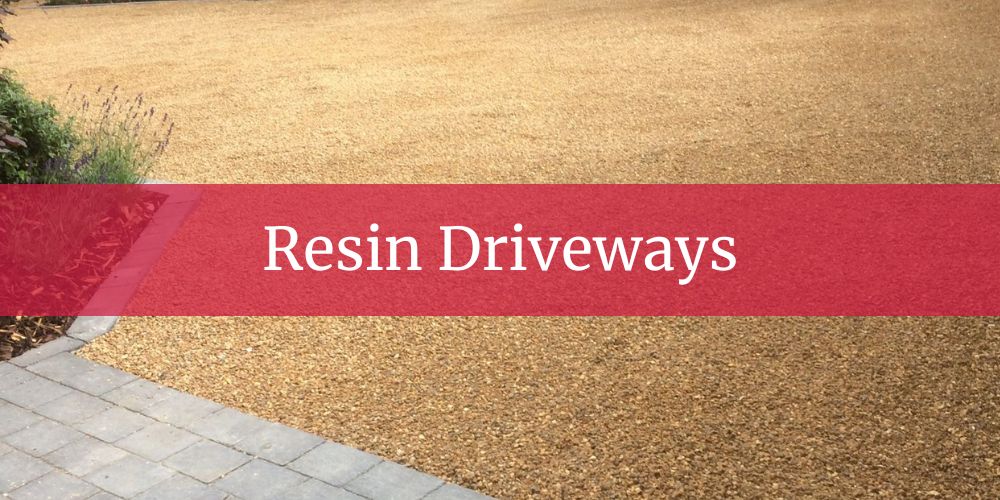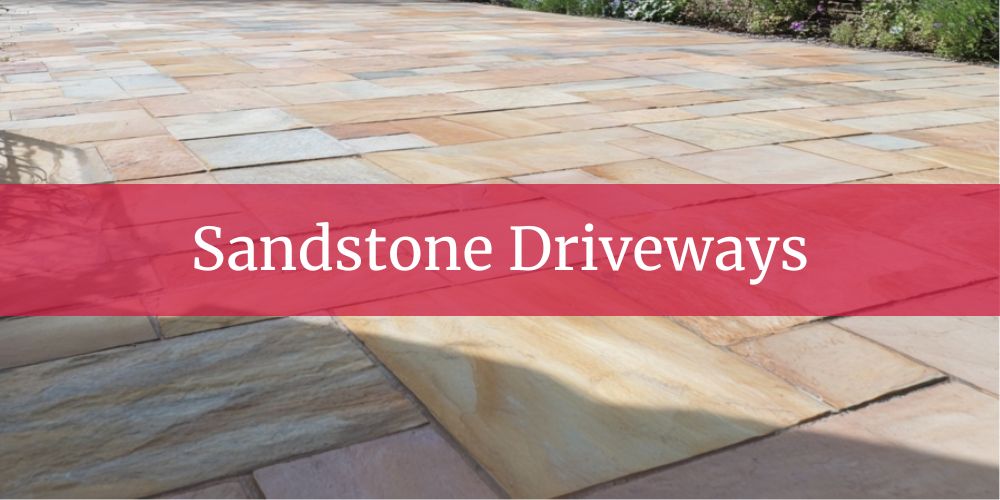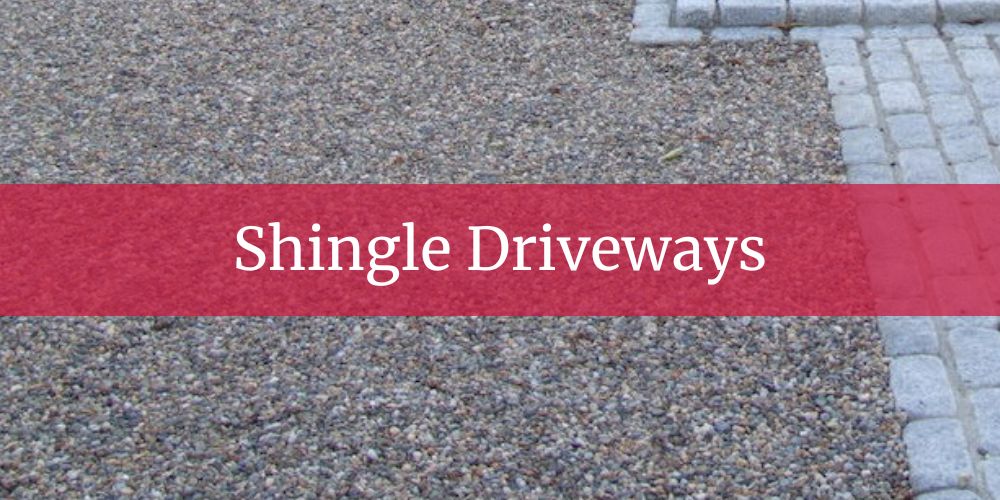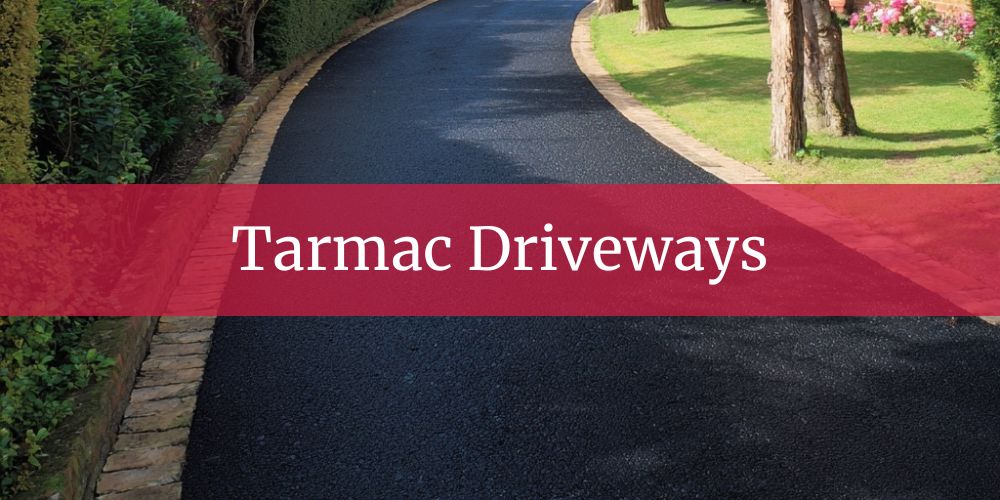Driveways Southend: Resin, Imprinted Concrete and Block Paving Specialists
Driveways Southend are specialist installers of resin-bound and pattern-imprinted concrete driveways across Southend-on-Sea, Leigh-on-Sea, Westcliff, Thorpe Bay, Rochford and the surrounding areas. These are our focus systems: resin for a seamless, SuDS-friendly finish with UV-stable binders; imprinted concrete for a monolithic, weed-free slab with realistic stone, slate or brick effects and anti-slip sealing where needed. Every project is engineered for long life in a coastal climate—properly compacted MOT Type 1 foundations, accurate levels and falls, discreet threshold channels and soakaways, plus permeable build-ups where appropriate. From first survey to final sweep-up, we handle everything: design, groundworks, edging, drainage, finishing details and clean handover.
If resin-bound or imprinted concrete isn’t your choice, we also install block paving, sandstone, shingle and tarmac driveways. All of our driveways are built on the right sub-base with robust edging and planned drainage. Expect neat thresholds, crisp margins, and a finish that stands up to daily parking and Southend’s coastal weather. We work cleanly, keep you informed throughout the installation process.
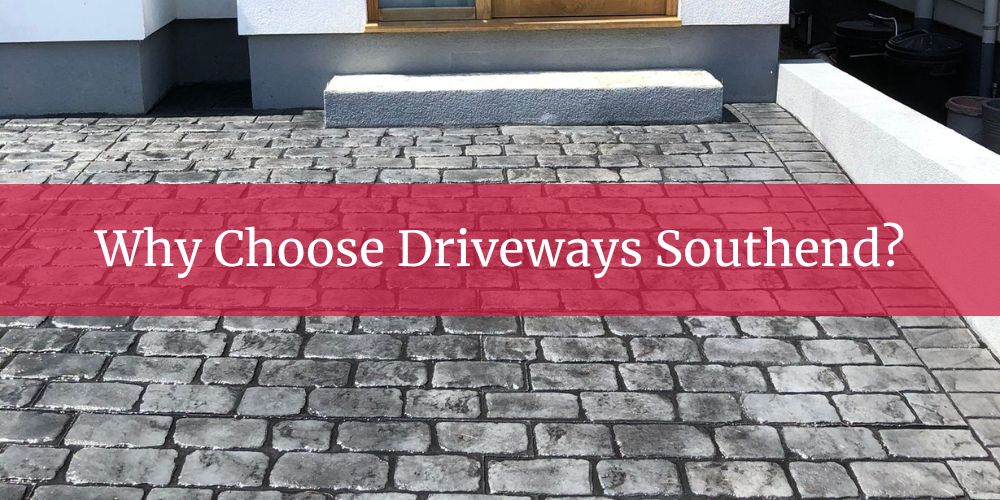
Why Choose Driveways Southend as Your Southend On Sea Driveway Contractor?
Choose Driveways Southend if you want specialists in the two systems that perform best here by the sea: resin-bound (UV-stable, SuDS-ready) and pattern-imprinted concrete (monolithic, weed-free, anti-slip sealed). We engineer every driveway for Southend’s coastal conditions. Each driveway is properly compacted MOT Type 1 bases, accurate falls, threshold channels, and A4/316 stainless detailing that won’t rust. Our finishing is meticulous: crisp edging, tidy thresholds, hidden recessed covers, and joints placed to manage shrinkage without spoiling the pattern. You’ll get clear timelines, consistent communication, and a crew that keeps the site neat, protects access, and cleans down daily. We use market-leading binders, aggregates, and concretes, installed by an experienced local team that knows the ground and rainfall patterns from Leigh to Thorpe Bay. Designs can be SuDS-compliant where suitable, or we’ll integrate soakaways and discreet drainage to keep façades dry. Every driveway is handed over with maintenance guidance and a written guarantee—built to look great and last in Southend.
- Specialists: resin-bound (UV-stable, SuDS-capable) and imprinted concrete (monolithic, weed-free).
- Built for Southend: compacted MOT Type 1, precise falls, and threshold channels.
- Coastal detailing: A4/316 stainless grilles and trims that won’t rust.
- Premium finish: crisp edging, aligned patterns, recessed covers that disappear.
- Reliable delivery: clear timelines and a tidy, respectful local crew.
- Proven materials: market-leading binders, aggregates, and concrete.
- Smart drainage: SuDS where viable; otherwise channels/soakaway.
- Aftercare: maintenance guidance and ongoing support.
1. Specialists: Resin-Bound & Imprinted Concrete
We specialise in the two driveway systems which consistently perform in Southend’s coastal conditions: resin-bound and pattern-imprinted concrete. Resin-bound is mixed and trowelled to a seamless, open-textured layer (typically 18–20 mm with 2–5 mm aggregate) for dependable grip, clean thresholds, and—on a porous build-up—SuDS compliance. Imprinted concrete is a monolithic slab (often 100–125 mm, fibre or mesh reinforced) stamped to mimic stone, slate, cobble or brick, delivering a weed-free surface with high load capacity; anti-slip additives can be included at reseal. Because we focus on these systems, we know the nuances: UV-stable aliphatic binders and aggregate gradings for resin, correct release/seal cycles and joint placement for imprinted. The result is faster specification decisions, tighter detailing, and finishes that stay sharp by the sea.
2. Built for Southend: Sub-Base, Falls, Thresholds
Every install starts with a site-specific base: MOT Type 1 compacted in layers (typically 150–200 mm for cars, more on weaker ground) with geotextile separation where required. We build in precise falls of ~1:60–1:80, so storm water moves away from façades and never sits at the garage mouth or threshold. At doors, low-profile threshold channels protect the DPC (150 mm rule) while still allowing near level access; load classes are selected sensibly (A15 at doors, B125 where vehicles cross). For resin, we offer fully permeable stacks (Type 3 + porous base) where soils allow; for imprinted, we integrate channels/soakaways sized to BRE guidance. This engineered approach resists rutting, ponding and winter damage, keeping the driveway usable through Southend’s coastal downpours.
3. Coastal Detailing: A4/316 Stainless Throughout
Salt air accelerates corrosion, so exposed metalwork—grilles, screws, trims, thresholds—is specified in A4/316 stainless or marine-grade coated alternatives. Fixings and grates are aligned to paving modules so lines remain crisp and maintenance access is easy without awkward cuts. We isolate dissimilar metals to prevent galvanic corrosion and seal penetrations to stop water tracking under finishes. Where aesthetic continuity matters, we use colour-matched linear drains and tile-in or block-in options that still deliver the right load rating. These details reduce tea-staining and rust streaks, cutting long-term maintenance and preserving the finish.
4. Premium Finish: Edging, Patterns, Recessed Covers
Crisp margins make the difference: granite setts, concrete kerbs on bed & haunch, or slim steel/aluminium restraints lock edges so steering forces don’t break away the sides. On imprinted concrete, control joints are positioned to coincide with faux grout lines or border bands, preserving the visual while controlling shrinkage; sealers are chosen in matte/satin/gloss with optional anti-slip. Recessed inspection covers (B125-rated) are paved to match and set square to coursing so they virtually disappear, and thresholds are banded to hide tyre tracking. We set out to string lines, balance cuts against façades, and keep tolerances tight (lippage and regularity checked with straightedges) for a calm, high-end finish. The net effect is a driveway that reads as designed—not just installed—and stays tidy under daily use.
5. Reliable Delivery: Timelines & Tidy Site
Before we start, you’ll get a clear programme with milestones (survey, groundworks, base, surface, finishing) and who’s on site each day. We protect access with boards/ramps, fence off work zones, and set safe pedestrian routes so daily life carries on smoothly. Dust and noise are managed with damp-down, tidy cutting stations, and reasonable working hours; services are located and marked to avoid surprises. Waste is segregated and carted to licensed facilities, with skips positioned neatly and permits arranged where needed. Each day ends with a sweep-down, tool tidy, and a short progress update. When you choose Driveways Southend as your driveway contractor you can be assured of a professional service from start to finish.
6. Proven Materials: Binders, Aggregates, Concrete
Resin-bound systems use UV-stable aliphatic binders and washed, kiln-dried aggregates graded for the application (often 2–5 mm for driveways) to keep colours true in sea air. Imprinted slabs are poured in durable mixes (e.g., C30/37), reinforced with mesh or macro-fibres, finished with colour hardeners/release where specified, and cut with planned control joints to manage shrinkage. Primers, mortars, and grouts are exterior-rated and compatible—polymer-modified where bond or flexibility is needed—so edges, borders, and thresholds stay tight. Hardware (trims, grilles, fixings) is corrosion-resistant, and recessed covers are load-rated (B125) for vehicle areas. The whole spec is chosen for longevity, not just first-day looks.
7. Smart Drainage: SuDS or Discreet Outfalls
Where soils allow, we build fully permeable resin systems: open-graded sub-base, porous base, and a resin-bound wearing course so rainfall infiltrates on plot. If infiltration isn’t viable (clay or high water table), we set precise falls (≈1:60–1:80) to linear channels, gullies, or a BRE 365–sized soakaway, with silt traps and rodding points for easy maintenance. Threshold channels protect the DPC while allowing near-level access, and grilles are sized to load—A15 at doors, B125 at vehicle crossings. Roof downpipes are tied into the plan so water never tracks across the driveway. The result is a dry threshold and a surface that stays usable through coastal downpours.
8. Aftercare: Maintenance Guide & Ongoing Support
At handover you’ll get a simple care guide tailored to your surface—how to sweep, low-pressure wash, and when to biocide shaded areas. We explain stain handling: prompt blotting of oil, leaf-tannin cleaners, and what not to use (no harsh acids or turbo nozzles on joints). For imprinted concrete, we outline reseal intervals (typically 2–4 years) and optional anti-slip top-ups; for resin-bound, how to vacuum-sweep if needed and manage occasional spot repairs. We leave a small reference of your aggregate/pigment choices so future touch-ins blend cleanly. If you’d like, we can schedule a first-year check to make sure everything is bedding in as expected.
Have a question about an upcoming project?
What Is A Driveway Contractor?
A driveway contractor is a specialist who surveys your plot, designs the layout and levels, and then builds the driveway—handling groundworks, sub-base, edging, drainage, and the chosen surface (e.g., resin-bound, imprinted concrete, block paving, or tarmac). They manage practical details like damp-proof-course clearances, threshold channels, recessed covers, and safe tie-ins to pavements and garages. In Southend-on-Sea, a good contractor also allows for coastal conditions—specifying corrosion-resistant components, planning SuDS-friendly permeability or soakaways, and setting falls to cope with sea-driven rain. They’ll coordinate with utilities and, where relevant, advise on dropped-kerb works via the council and dispose of spoil responsibly. Finally, they hand over maintenance guidance so the new drive stays sharp and serviceable for years.
What Areas Do Driveways Southend Cover For Driveway Services?
Driveways Southend covers all of Southend-on-Sea and its neighbourhoods, including Westcliff-on-Sea, Leigh-on-Sea, Chalkwell, Thorpe Bay, Shoeburyness, Southchurch, Prittlewell, Eastwood and Belfairs. We also work extensively across the Rochford district; Rochford, Hawkwell, Ashingdon, Hockley, Great & Little Wakering, Barling Magna, Great & Little Stambridge and Hullbridge. In Castle Point, we serve Hadleigh, Thundersley, South Benfleet and Canvey Island. Rayleigh and Wickford are within our regular call-out area too, so you’re fully covered across South Essex.
What Driveway Services Do Driveways Southend Provide?
Driveways Southend specialises in resin-bound and pattern-imprinted concrete driveways—our core systems for a seamless, durable finish that suits Southend’s coastal climate (SuDS-ready resin build-ups and planned-drainage imprinted slabs with optional anti-slip). We also install block paving and tarmac driveways where a modular or fast-lay surface is preferred. For natural looks and budget flexibility, we offer sandstone and shingle (gravel) driveways. Beyond driveways, we build patios, including; porcelain patios (20 mm exterior tiles) and traditional patios, to complete your outdoor space. Every project includes survey, design, groundworks, edging, levels, and drainage detailing, finished with neat thresholds and tidy workmanship.
- Resin Driveways: Seamless, UV-stable, SuDS-ready.
- Imprinted Concrete Driveways: Monolithic, weed-free, realistic stone/slate looks.
- Block Paving Driveways: Modular, repairable, custom colours/borders.
- Tarmac Driveways: Fast, cost-effective; SMA/heavy-duty options.
- Sandstone Driveways: Natural flags/setts; classic kerb appeal.
- Shingle (Gravel) Driveways: SuDS-friendly; optional stabilisation grids.
1. Resin Driveways
Our core Southend system delivers a seamless, no-loose-stone surface that’s comfortable underfoot and quiet under tyres. We specify UV-stable aliphatic binders with washed, kiln-dried aggregates (typically 2–5 mm) for colourfastness in sea air and strong interlock under turning. On a fully permeable build-up—open-graded Type 3 sub-base plus a porous base—resin-bound can meet SuDS aims; where soils are heavy or groundwater is high, we set falls (~1:60–1:80) to threshold/linear channels, gullies or a BRE-sized soakaway. Typical wearing depth is ~18–20 mm, with robust edge restraints (granite setts, aluminium or steel trims) to keep margins crisp and protect thresholds. Optional anti-slip (fine mineral or polymer bead) can be broadcast along walk paths and slopes for confident wet footing without changing the look.
2. Imprinted Concrete Driveways
Pattern-imprinted concrete provides a monolithic, reinforced slab stamped to realistic stone, slate, cobble or brick effects for a weed-free, high-load finish. We pour to suit duty (often 100–125 mm for domestic drives) with mesh or macro-fibre reinforcement, set accurate falls (~1:60–1:80), and integrate threshold channels to manage coastal downpours. Control joints are saw-cut within 24–48 hours and aligned to faux grout lines or border bands so the pattern reads cleanly while shrinkage is controlled. Colour can be integral pigment or dry-shake hardener with antique release for two-tone depth; sealers are UV-stable in matte or satin with optional anti-slip for main walk routes. Day-to-day upkeep is light—periodic washing and resealing every 2–4 years keeps colour rich and the surface protected.
3. Block Paving Driveways
Interlocking blocks over a compacted base distribute loads effectively for daily parking and tight turning. A typical build is 150–200 mm MOT Type 1, a 30–40 mm sharp-sand screed, and 50–60 mm blocks compacted to line and level; herringbone (45°/90°) provides the best interlock at steering points. Borders, bands and contrasting colours deliver tailored kerb appeal, while recessed covers paved to match keep services discreet. Where infiltration is viable, permeable block systems use open-graded bedding/joint aggregates over Type 3 sub-base to support SuDS and reduce runoff. Repairs are straightforward—individual units can be lifted, the bedding corrected, and the same blocks relaid for an invisible fix.
4. Tarmac Driveways
A fast, cost-effective two-course asphalt build gives a smooth, tidy finish with sealed joints and minimal disruption. Typical specs: AC20 binder 50–60 mm topped with AC6 or SMA 25–30 mm, both compacted hot over a well-compacted MOT Type 1 base; we apply tack coats and hot-seal tie-ins to keep water out. Because asphalt is non-permeable, we set falls (~1:60–1:80) and integrate linear channels, gullies or a soakaway to protect façades and prevent ponding. For vans, slopes and turning bays, we can thicken courses or specify SMA / polymer-modified binders for extra scuff and rut resistance. Future refreshes are simple: plane high spots, patch defects, re-tack and lay a 25–40 mm overlay to restore texture and colour.
5. Sandstone Driveways
Natural sandstone flags or setts deliver timeless kerb appeal with riven, sawn, or flamed textures that keep good wet-grip by the coast. For frequent turning, we recommend a rigid full-bed build: compacted MOT Type 1, (optionally) a reinforced concrete base, slurry-primed backs, and high-strength external pointing to lock everything tight. Where soils allow, open-jointed sandstone setts on an open-graded Type 3 sub-base can be designed as SuDS-friendly with 4–6 mm no-fines bedding and 2–6 mm joint grit. Borders, double bands, and inset features add definition at entrances and parking bays, while B125 recessed covers keep services discreet. Routine care—sweeping, a gentle wash, and occasional re-pointing—keeps the surface sharp; on lighter stones a breathable impregnating sealer helps resist oil and salt marking in Southend’s sea air.
6. Shingle (Gravel) Driveways
Gravel is naturally free-draining and budget-flexible—ideal for long drives and relaxed aesthetics. A typical build uses a permeable geotextile, a compacted Type 1 or Type 3 sub-base, and a 30–50 mm wearing layer of washed, angular 6–20 mm gravel that balances foot comfort with stability; that reassuring “crunch” also adds passive security. On slopes and turning bays, cellular stabilisation grids lock stone in place to reduce rutting while preserving permeability. Granite or steel edging contains the gravel cleanly, and a short resin-bound or block-paved apron at thresholds protects entrances from scatter and steering forces. Upkeep is simple—rake to re-level, leaf-blow debris, top up occasionally, and add a French drain or soakaway on heavier soils to keep the surface puddle-free.
Do Driveways Southend Provide Patio Services?
Yes, Driveways Southend also design and build patios alongside our driveway work. We install exterior porcelain patios (20 mm, R11) and traditional stone or concrete terraces using full-bed fixing with primed backs and consistent 3–5 mm joints. Our builds include planned drainage (falls, threshold channels, optional SuDS-friendly build-ups), crisp edging, steps, recessed covers, and coastal-ready A4/316 stainless detailing. We also tailor layouts for dining, lounging, and BBQ zones and provide simple maintenance guidance.
- Porcelain Patios: 20 mm exterior tiles; low maintenance.
- Patios (Traditional): Natural stone or concrete with neat drainage/edging.
1. Porcelain Patios
20 mm exterior-grade porcelain (typically R11, PTV ≥36 wet) gives a clean, modern terrace that resists stains, UV fading, and frost—perfect for coastal Southend. We install on a full-bed, polymer-modified mortar with primed/back-buttered tiles, 3–5 mm joints, movement detailing every 3–4 m, and falls ~1:60–1:80 to move water away from façades. Threshold channels enable near level access while protecting the DPC, and A4/316 stainless trims and grilles fend off corrosion in sea air. Large formats (e.g., 900×600 or 1200×600) reduce grout lines for an indoor-outdoor look; cuts are made with a water-cooled porcelain blade for chip-free arrises. Maintenance is minimal—periodic sweeping, a gentle wash, and the odd biocide in shaded spots; no topical sealing required.
2. Patios (Traditional)
Classic terraces in natural stone, clay brick, or concrete flags are laid on a robust base with thoughtful drainage and edge restraints for longevity. We use format changes and banding to define dining, lounging, and BBQ zones, align joints to façades for calm sightlines, and integrate recessed covers so services virtually disappear. Steps are detailed with bullnose treads, planters double as subtle wind breaks, and lighting is planned (IP-rated) for comfortable evening use. Where infiltration is feasible, open-jointed setts over Type 3 sub-base support SuDS; otherwise we set precise falls and use linear channels or a soakaway. The result is a practical, good-looking outdoor room that complements your new driveway and performs year-round.

